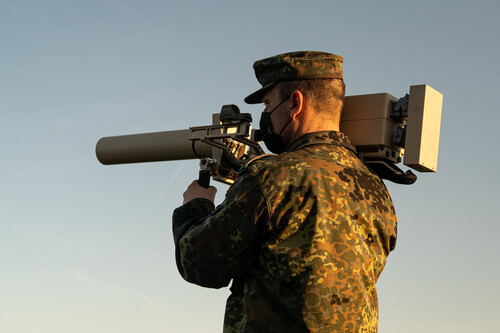On June 1, what appeared to be several mobile homes located at strategic points in Russia were actually camouflaged trucks loaded with drones, ready for a covert operation. This marked the beginning of Operation Spiderweb, the largest Ukrainian offensive on Russian soil and a devastating attack on Moscow’s bomber fleet. Nearly a month after the attack, Ukraine has answered one of the big questions: How did the swarms get into Russian territory?
Redefining modern warfare. For more than 18 months, Ukrainian intelligence services meticulously designed an operation that culminated in an unprecedented attack thousands of miles from Ukraine’s borders. They sent an army of drones, hidden in prefabricated mobile homes, across international borders to reach Russian strategic air bases.
Vasyl Maliuk, head of the Security Service of Ukraine (SBU), revealed details of the operation in an interview with The Washington Post. He confirmed that the attack destroyed at least 12 Russian aircraft, including Tu-95 bombers, and damaged 41 more. Some of the damaged aircraft were located more than 2,110 miles east of Ukraine, in Siberia. Satellite images analyzed by The Post confirmed partial destruction. However, limited visual evidence due to weather conditions suggests that Moscow may have removed some of the debris before it could be captured.
How Ukraine conceived the attack. Maliuk said planning began in November 2023 in response to a new wave of Russian bombardment on Ukrainian cities. The idea was to hide drones inside mobile homes resembling standard housing units. These structures had autonomous energy systems —solar panels and special batteries— to keep the drones charged, even in extreme winter temperatures, while awaiting the final command.
Because of Russian restrictions on importing technological components, Ukraine used a tactic as old as war: bribery. In this case, it bribed customs agents to bring in the materials.
Almost nobody knows anything. The secrecy was total. Each group worked with compartmentalized information. The engineers who built the drones didn’t know their true purpose, and those who assembled the prefabricated houses didn’t know they housed weapons. In Maliuk’s words, it was “a tactical symphony” with multiple critical yet autonomous parts.
Surgical precision. On the morning of the attack, 117 modified FPV drones with dual explosive charges launched from the rooftops of camouflaged houses. Each drone was directed by an operator selected from Ukraine’s best. Each operator had a specific target—an aircraft whose location and environment had been studied using detailed models.
Ukraine designed the charges to penetrate the fuselage first and then detonate inside, maximizing damage to key components such as fuel tanks, missile launchers, and electronic systems that Russia can’t easily replace. Maliuk didn’t disclose the communication systems used for remote guidance but said they were multiple and sophisticated, specially designed to avoid interference and ensure success.
Strategic consequences. Operation Spiderweb was just the beginning. Two days later, Ukraine launched another major offensive against the Kerch Bridge, a symbol of Russia’s occupation of Crimea. It used one ton of underwater explosives. Although traffic was restored, the strike had clear symbolic and strategic effects.
In response, Russia launched a massive wave of drones and missiles that struck civilian areas in Kyiv, leaving dozens of casualties. Rather than triggering de-escalation, the Ukrainian action confirmed a new level of technological warfare. It showed Kyiv’s ability to strike deep within enemy territory. According to Maliuk, Operation Spiderweb is just a sample of Ukrainian intelligence’s potential to alter the rules of the conflict. It represents a unified effort involving logistics, technology and personnel.
The future of war. Amid the Russian offensive and constant pressure on Ukrainian cities, Operation Spiderweb stands as a milestone in modern warfare. This isn’t only because of the depth of its reach—from Ukrainian bases to Russian facilities in Siberia—but also because of its operational model: fragmentation of knowledge among operators, bribery, use of civilian camouflage, innovation in light weaponry, and the ability to launch high-precision attacks without large conventional platforms.
Maliuk says this is “the tip of the iceberg” when it comes to his agency’s work with drones, agent networks, and covert operations. In a conflict increasingly fought with bits and algorithms rather than armored divisions, the offensive showed that 21st-century warfare is defined by mastering stealth over brute force.




View 0 comments